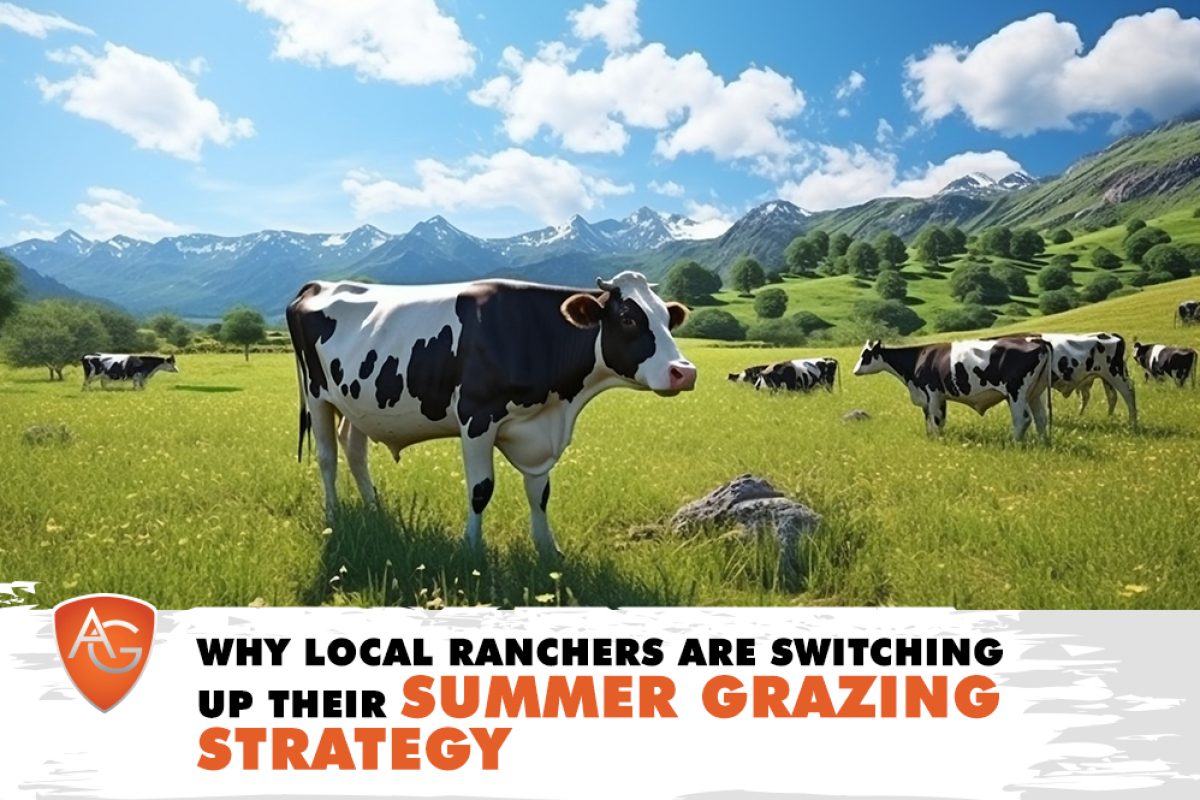Overview: Discover why more Laramie County ranchers are rethinking their summer grazing approach. Learn what’s changing, what’s working, and how to stay ahead with a practical strategy. Read on!
Talk to a few seasoned ranchers around Laramie County, and you’ll notice a common thread: summer grazing plans are shifting. What used to work — the same pastures, same rotation, same timing — isn’t holding up like it used to.
Between erratic rainfall, creeping weeds, and tighter margins, local operations are adapting how, when, and where they graze. And they’re seeing the payoff in pasture recovery, forage quality, and herd performance.
Here’s what’s driving the change — and why it might be time to reconsider your own summer grazing game plan.
Grazing Pressure Has Caught Up to Some Pastures
Years of back-to-back grazing on the same acres during summer months has worn down even the best stands. Grasses are slower to rebound, bare spots are growing, and weeds like cheatgrass and thistle are taking hold.
Ranchers are learning that long-term productivity depends on rest — not just for the livestock, but for the land. That’s why more folks are adjusting rotations or pulling animals off earlier and filling the gap with reliable feed sources like cow hay or grass/alfalfa mixes.
Also Read >> Cheatgrass Control With Herbicides to Improve Seeding Success
Moisture Patterns Are Less Predictable
When moisture doesn’t show up when expected, native grass delay growth or dry out faster. This leaves a shorter window for quality grazing — especially in upland or marginal ground.
Some ranchers are responding by grazing earlier in the season while quality holds, then shifting to hay or alternative pasture to avoid stressing the ground during peak heat. Others are leaning into rotational grazing systems that can flex with changing conditions.
>> Related Reading: The Do’s and Don’ts of Rotational Grazing as Pastures Grow
Hay is Playing a Bigger Role in the Summer Mix
Instead of stretching thin pastures to the breaking point, more producers are supplementing during summer to protect their best ground. That might look like:
-
Feeding Cow Alfalfa in sacrifice pastures
-
Using Orchard/Brome/Timothy mixes to support lactating cows
-
Keeping Wyoming Timothy/Garrison in reserve for late-summer transitions
It’s not a step backward — it’s a smart move to preserve forage base and improve pasture longevity.
More Focus on Soil Health & Forage Regrowth
The shift in grazing strategy isn’t just about yield — it’s about stewardship. Ranchers are realizing that good grazing is also good soil management. Rested grass develops deeper roots. Root systems hold more moisture. And healthy pastures resist weeds, reduce erosion, and feed cattle better.
Many are now building in intentional rest periods, rotating more frequently, or even incorporating cover crops and reseeding efforts to bring back the balance.
Community Knowledge is Fueling the Shift
There’s power in shared experience. As ranchers talk — at co-ops, sale barns, and church parking lots — the message spreads: what’s been done for decades can be improved. Those willing to experiment with summer grazing schedules are often the same ones reporting stronger pastures, better body condition, and fewer weed problems.
We’re Here to Help You Pivot
If your pastures are looking worn down or your usual rotation isn’t cutting it this summer, All Around Ag has the feed options to help you pivot. From Intermediate Wheat Rounds to Timothy Grass hay for horses and straight alfalfa, we’ll help you match the right hay to your herd’s needs — and give your ground the break it deserves.
Switching up your summer grazing strategy isn’t about following a trend. It’s about staying ahead of the curve — protecting your land, your cattle, and your livelihood. If you’ve been thinking about making a change, you’re not alone. And you don’t have to go it alone either.
